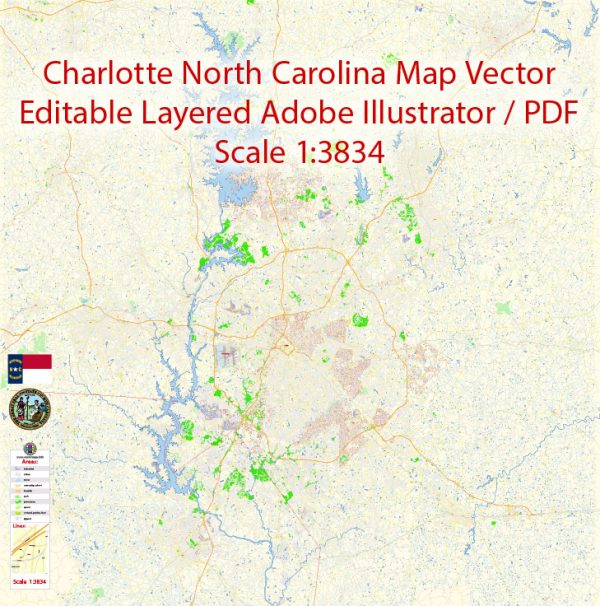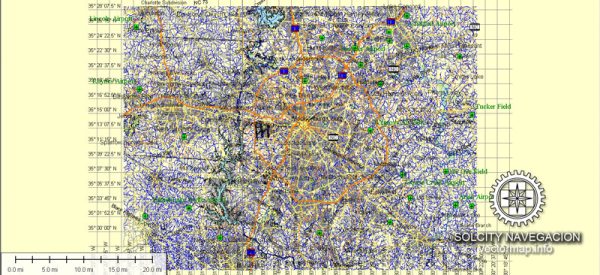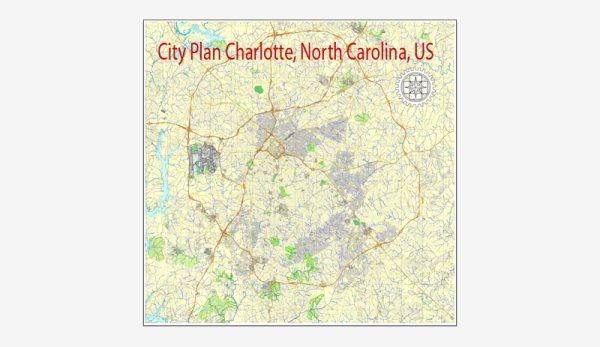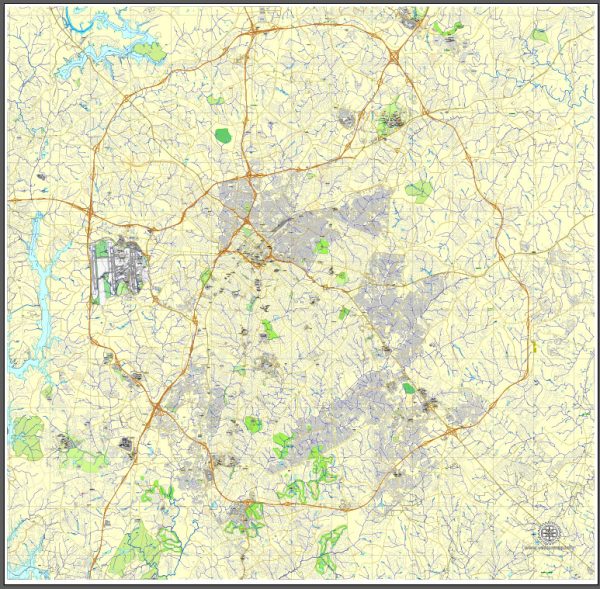Charlotte, North Carolina, has a rich history of urban development that reflects the broader trends in American urbanization. Here is an overview of key periods and developments in Charlotte’s urban history:
- 18th Century: Early Settlements
- Charlotte was founded in 1768 and named after Queen Charlotte of Great Britain. It was established at the crossroads of two Native American trading paths and soon became a regional trading hub.
- The discovery of gold in nearby Cabarrus County in 1799 led to a gold rush, bringing increased economic activity to the area.
- 19th Century: Cotton and Railroads
- Charlotte’s growth accelerated in the 19th century, driven by the cotton industry and the expansion of the railroad network. The city became a major transportation hub, connecting the Piedmont region with the rest of the South and beyond.
- The Charlotte and South Carolina Railroad, completed in 1852, solidified the city’s role as a transportation center.
- Post-Civil War Reconstruction and Industrialization
- After the Civil War, Charlotte played a role in the Reconstruction era and saw economic diversification. Textile mills and manufacturing industries began to flourish.
- The city’s first electric streetcar line was introduced in 1891, facilitating the development of suburban neighborhoods.
- Early 20th Century: Growth and Prosperity
- Charlotte continued to thrive in the early 20th century, and the city’s population grew. The construction of skyscrapers, like the 15-story Realty Building in 1926, marked Charlotte’s increasing urbanization.
- The completion of major highways, such as U.S. Route 29 and U.S. Route 74, enhanced Charlotte’s accessibility and connectivity.
- Mid-20th Century: Civil Rights Movement and Urban Renewal
- The Civil Rights Movement of the 1950s and 1960s had a significant impact on Charlotte, with activists advocating for racial equality. The city experienced desegregation and witnessed social and economic changes.
- Urban renewal projects in the mid-20th century transformed parts of Charlotte, leading to the construction of new infrastructure and the redevelopment of neighborhoods.
- Late 20th Century: Banking Hub and Urban Sprawl
- Charlotte emerged as a major banking center in the late 20th century, with institutions like Bank of America and Wachovia (later Wells Fargo) establishing their headquarters in the city.
- The city experienced significant suburbanization and sprawl during this period, with the development of residential communities outside the city center.
- 21st Century: Financial Center and Urban Revitalization
- Charlotte continued to strengthen its position as a financial hub, hosting the headquarters of major financial institutions.
- The early 21st century also witnessed efforts to revitalize the city’s urban core, with projects aimed at creating mixed-use developments, improving public spaces, and enhancing cultural amenities.
Today, Charlotte stands as a dynamic and rapidly growing city, with ongoing efforts to balance economic development, urban revitalization, and the preservation of its historical character. The city’s history reflects its ability to adapt to changing economic and social landscapes while maintaining a connection to its past.





 Author: Kirill Shrayber, Ph.D.
Author: Kirill Shrayber, Ph.D.